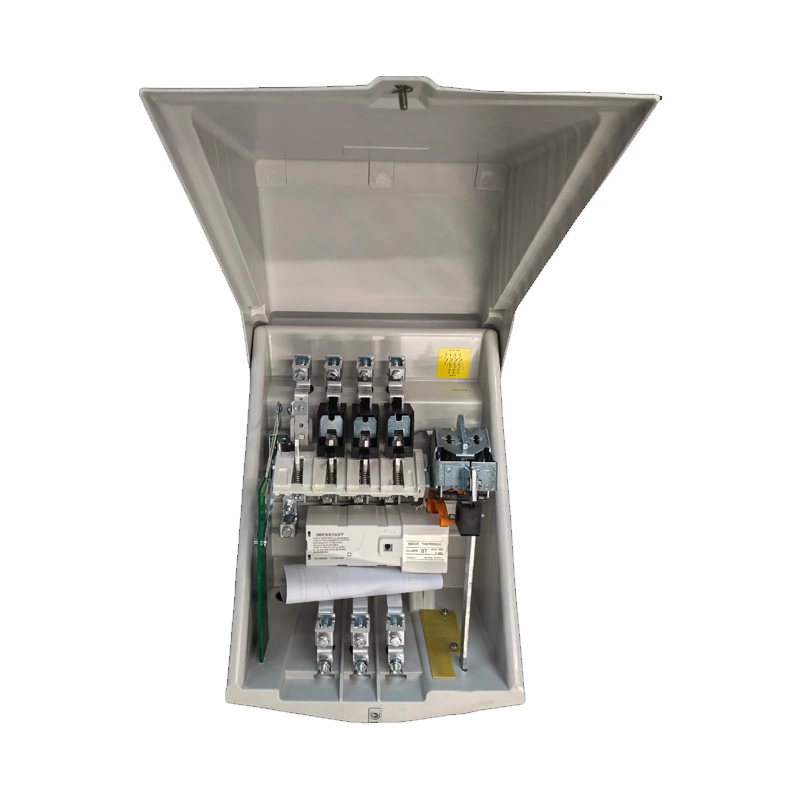Low Voltage Pole Mounted Circuit Breaker Fs Type "switch" And Others
What we have said above are all Low voltage pole mounted circuit breaker (commonly known as switches), but when we are constructing power plants, we may encounter situations where users call them FS switches. FS switches are actually the abbreviation of load switches + fast fuses.
Because switches are relatively expensive, this FS circuit is used to save costs. Normal current is cut off by the load switch, and the current is cut off by the fast fuse in case of faults.
This circuit is generally common in the 6kV power supply system of power plants. Protection is coordinated with this circuit, and it is often required that when the fault current is greater than the breaking current allowed by the load switch, tripping should be prohibited or delayed to allow the fast fuse to cut off the current. Some power plant users may not want the protection to have a holding circuit.
Because the quality of the switch is poor, the auxiliary contacts may not be in place, and once the holding circuit is started, it must rely on the auxiliary contacts of the circuit breaker to open before it can return, otherwise the tripping current will continue to be added to the tripping coil until the coil burns out.
The tripping coil is designed for short-term power-on, and it is easy to burn out if the current is added for a long time. And we definitely want a holding circuit, otherwise it is easy to burn the protection contacts.
Of course, if the on-site user insists, the holding circuit can also be removed. Generally, the simpler method is to cut off the connection between the normally open contact of the holding relay and the control mother positive on the circuit board.
At the debugging site, it must be noted that if the position indicator lights are all off after the switch is opened and closed. (Excluding the spring without energy storage, in this case, the panel displays the spring without energy storage alarm) The control power must be turned off immediately to prevent the switch coil from burning. This is a basic principle that should be remembered on site.

